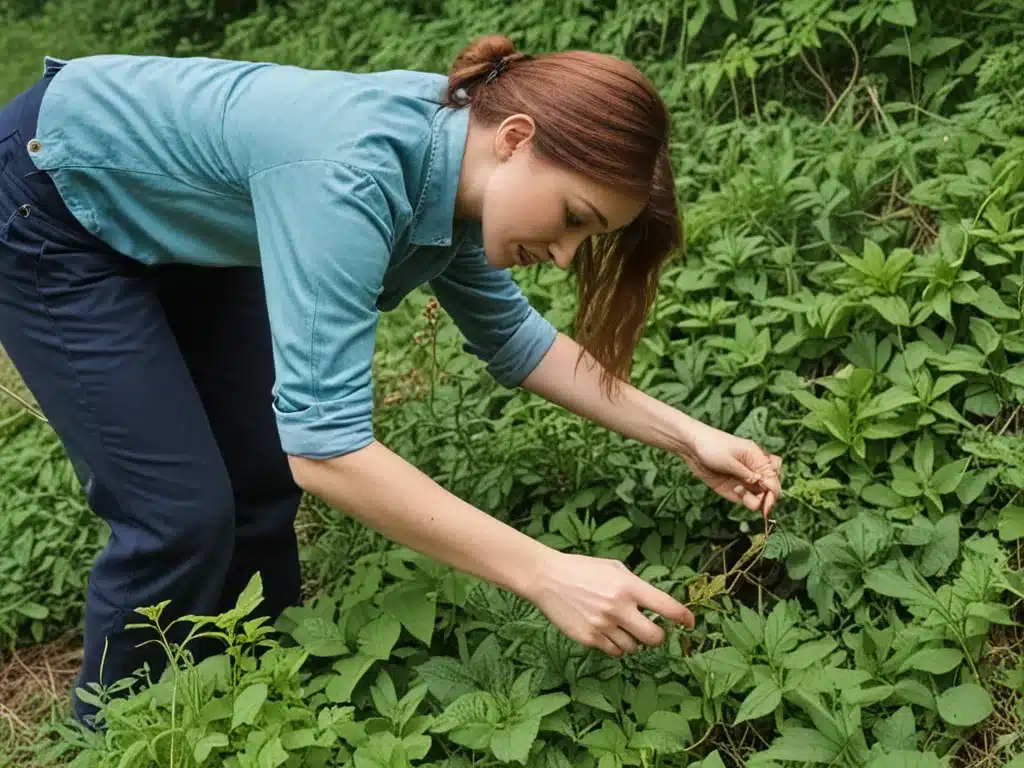Introduction
As an avid gardener, I often find myself battling pesky weeds that pop up around my yard and garden beds. Though some weeds are harmless, others like poison ivy, hemlock and nettles can cause painful rashes, irritation and even serious illness if touched or ingested. As much as I’d love to get rid of them for good, I know it’s crucial to remove these plants safely without putting myself or my family at risk.
In this article, I’ll share what I’ve learned about identifying and safely removing common hazardous weeds found in many backyards. With the right approach and protective gear, you can eliminate these aggressive plants without harming yourself, children, pets or nearby plants in the process.
Identifying Poisonous Weeds
Before attempting to remove potentially dangerous weeds, it’s vital to properly identify them. Misidentification can lead to painful exposure to toxins or unnecessary use of herbicides. Here’s how to identify the three most common poisonous weeds:
Poison Ivy
Poison ivy (Toxicodendron radicans) is found throughout most of North America. It can grow as a shrub or vine. Look for clusters of three glossy, green leaves. Sometimes the leaves have a reddish tint. The saying “leaves of three, let it be” helps remind of the distinctive triple leaf pattern. Tiny white or yellowish flowers may appear in spring, followed by waxy, white berries. The entire plant produces an oil called urushiol that can cause an itchy, blistering rash if touched.
Hemlock
Not to be confused with harmless carrots or parsley, poison hemlock (Conium maculatum) has fern-like, lacy leaves that grow on green, hollow stems with purple spots. Tiny white flowers form umbrella-shaped clusters. Crushing any part of this plant releases a foul odor often described as “mousy.” All areas contain a poison called coniine that can cause seizures, paralysis and death if eaten. Poison hemlock is extremely dangerous and should always be handled with great caution.
Stinging Nettles
Stinging nettles (Urtica dioica) often pop up in moist areas with rich soil. The leaves are oval-shaped with toothed edges, and flower clusters appear in summer. Tiny needle-like hairs on the leaves and stems cause a stinging or burning sensation at the slightest touch. This reaction subsides within an hour. Severe reactions include difficulty breathing, hives and swelling. Nettles rarely cause long-term issues.
Safe Weeding Gear and Supplies
Weeding hazardous plants demands vigilant protection for your skin, eyes and lungs. Here are some must-have supplies:
-
Thick gloves – Leather or rubber gloves prevent plant oils and hairs from contacting skin. Wash gloves after each use.
-
Long sleeves and pants – Wear tightly woven, non-absorbent clothes with pant legs tucked into boots. Change clothes immediately after weeding.
-
Safety goggles – Protect eyes from contact with plant oils and hairs.
-
Dust mask – Avoid inhaling microscopic plant particles.
-
Closed toe shoes – Boots or garden shoes protect feet.
-
Trowel or weeding tool – Use for digging out roots. Avoid pulling noxious weeds with bare hands.
-
Trash bags – Seal uprooted plants immediately to prevent contact.
-
Soap and water – Wash skin and tools after handling plants to prevent residual oil reactions.
Safe Removal Methods
With the proper safety gear on, you can now dig in and remove those hazardous weeds safely using these methods:
Manual Removal
-
Cover all exposed skin and wear protective gear. Do not touch plants with bare hands.
-
Use a spade, trowel or hoe to loosen the soil and dig down at least 6 inches around the plant’s base to get the roots.
-
Gently lift and place the entire plant into a trash bag for disposal. Avoid breaking stems and leaves.
-
Seal trash bags containing plants to prevent contact during transport and disposal.
-
Monitor the area and promptly remove any regrowth.
Herbicide Application
-
Verify correct plant identification before using any herbicide.
-
Select an appropriate broadleaf or woody plant herbicide containing glyphosate or triclopyr. Read the label carefully.
-
Wear waterproof gloves, long sleeves and protective eyewear when handling herbicides.
-
On a calm day, use a small spray bottle to apply herbicide directly to plant leaves, avoiding contact with desired plants. Follow product directions.
-
Monitor the area and re-apply herbicide as needed until the plants are dead.
-
After 1-2 weeks, uproot dead plants and discard.
Smothering With Mulch
-
Mow or trim down weeds to a few inches above soil level.
-
Water the area deeply the day before smothering.
-
Spread 4-6 layers of thick cardboard or several layers of newspaper over the entire area, overlapping the edges.
-
Top with 4-6 inches of organic mulch like wood chips, pine needles or straw.
-
Leave covered all season. The lack of light eventually kills the plants.
-
Pull back mulch in fall and remove dead roots before they re-sprout.
Safe Disposal
Proper disposal is a critical final step to prevent further spread:
-
Never compost poisonous plants – Toxins persist and can contaminate compost.
-
Bag plant debris securely – Double bag plant parts to prevent exposure during transport.
-
Wear gloves when handling bags – Avoid direct contact with contaminated bags as well.
-
Label as hazardous – Mark bags clearly as hazardous material. Many municipalities require this for pick-up.
-
Dispose according to local guidelines – Regulations vary. Burning may be allowed in some rural areas.
Taking a few sensible precautions goes a long way in staying safe while successfully ridding gardens of hazardous weeds. With persistence and consistent monitoring, even aggressively spreading plants can be managed safely.







